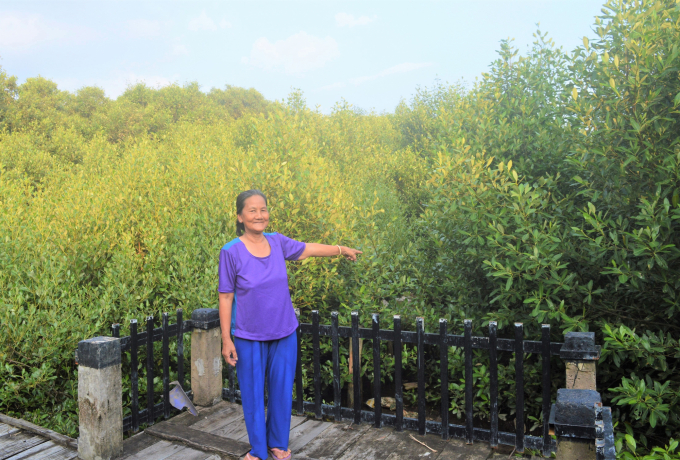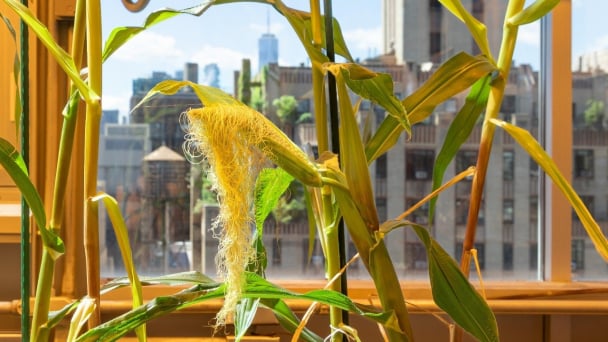June 2, 2025 | 18:32 GMT +7
June 2, 2025 | 18:32 GMT +7
Hotline: 0913.378.918
June 2, 2025 | 18:32 GMT +7
Hotline: 0913.378.918

Mr. Le Quoc Anh, Vice Chairman of Kien Giang Provincial People's Committee (standing), delegates and experts attending the conference. Photo: Trung Chanh.
The project launch in Rach Gia city was attended by the MARD's Management Board of Forestry Plans, the provincial people's committees of Kien Giang and Ca Mau, as well as local and foreign experts in coastal technology and coastal mangrove restoration.
The project aims to establish solutions to protect coastal lines with higher restoration ability and economic efficiency. It includes the establishment and consolidation of the available sea dykes to reach the grade of II, plantation and development of coastal protection forest, improvement of man force and efficiency in forest management, people’s awareness as well as the quality of coastal residences via sustainable livelihood models.
The project has a total capital of 24 million Euros (about VND 600 billion), of which 18 million Euros are a preferential loan from the German Government through the German Reconstruction Bank (KfW), and the rest is the reciprocal capital of the Vietnamese Government.

When the project is completed, about 2,800 hectares of mangrove forests will be developed and protected, contributing to the response to climate change and sea-level rise. Photo: Trung Chanh.
The local-level component project in the province of Kien Giang has a total investment of 9.3 million euros, of which 7 million euros come from the German government's Official Development Assistance (ODA) and the remainder is local reciprocal capital. This project intends to restore and develop sea dykes and forests, contract for 1,000 hectares of forest protection, plant 1,600 hectares of forests and 5 million scattered trees, and create a model of agro-forestry-fishery to promote the development of coastal residents' livelihood.
After completion, the project will contribute to the protection of the coastal area, the mitigation of natural disasters, and the protection of agricultural fields with nearly 300,000 hectares (ha) of aquaculture and 55,900 hectares (ha) of rice cultivation in Kien Giang and Ca Mau; around 2.800 ha of mangroves being developed and protected to enhance resistant capacity to climate change and rising sea level; around 18,000 populace of 6 districts in 14 communes will benefit and 19km of sea dyke and wave shielders are upgraded and protected.
Translated by Linh Linh

(VAN) Novel process harnesses machine learning to reveal groups of genes that determine how efficiently plants use nitrogen.

(VAN) Several scientists and farmers are experimenting with soil treatment in some key durian-growing regions such as Cai Lay (Tien Giang), Dak Song, Gia Nghia, and Dak R’lap (Dak Nong).
/2025/05/25/4127-3-073637_820.jpg)
(VAN) Thanks to the promotion from an FAO-implemented project, vegetable production in greenhouses in Moc Chau has seen strong development, from 1.5 hectares in 2021 to nearly 50 hectares in 2024.

(VAN) FAO has recently supported USD 140,000 to implement the project 'Risk mitigation human-animal interface risks through disease control initiatives in pig farming.'

(VAN) The People's Committee of Tra Vinh province has approved an adjustment to the investment policy for the Green Hydrogen Plant project, increasing its area to approximately 52.76 hectares.
![Reducing emissions from rice fields: [2] Farmers’ commitment to the soil](https://t.ex-cdn.com/nongnghiepmoitruong.vn/608w/files/news/2025/05/05/dsc08881jpg-nongnghiep-140632.jpg)
(VAN) Clean rice cultivation model in Thuong Tan commune, Bac Tan Uyen district, is assisting local residents in achieving sustainable agriculture by substantially reducing costs, increasing productivity, and protecting the environment.

(VAN) At the conference to disseminate Resolution No. 68, AgriS introduced its digital agricultural ecosystem and reaffirmed its commitment to accompanying the Government in promoting private sector development and sustainable agriculture.